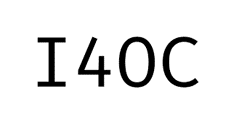Sexism and violence in dating relationships among adolescents in Lima
DOI:
https://doi.org/10.18050/psiquemag.v10i1.2646Keywords:
Sexism, Violence, Dating relationships, AdolescentsAbstract
The purpose of the study was to determine the relationship between sexism and violence committed and suffered in dating relationships in adolescents between 15 and 17 years of age from North Lima. The sample consisted of 93 adolescents, for which the type of research was applied and the non-experimental cross-sectional design. The instruments used were; the Detection Scale of Sexism in Adolescents (DSA) and the Inventory of violence in dating relationships among adolescents (CADRI). The results show that sexism is correlated in a direct and significant way with the violence committed, and in a non-significant and direct way with the violence suffered, in a low degree for both.
References
Allport, G. (1954). The Nature of Prejudice. Addison-Wesley.
Bandura, A. y Walters, R. (1963). Aprendizaje social: desarrollo de la personalidad.Alianza Editorial.
Begazo, N. (2016). Investigación sobre la Violencia Durante el Noviazgo en las Alumnas de la Escuela Profesional de Psicología [Tesis de Magistratura, Universidad Nacional de San Agustín, Perú].
Bowlby, J. (1979). Una base segura. Aplicaciones clínicas de una teoría del apego.Ediciones Paidós.
Calzadilla, P. (2016). Sexismo ambivalente y violencia de género en adolescentes. Influencia del contexto socio comunitario [Tesis de Maestría, Universidad de La Laguna, España].
Cuenca, I. y Morales, P. (2019). Sexismo ambivalente y violencia de pareja en estudiantes del instituto tecnológico superior libertad [Tesis de Licenciatura, Universidad Central de Ecuador].
Dulong, C. (2018). Sexismo y violencia de género en estudiantes de una institución educativa privada, Chimbote – 2018 [Tesis de magistratura, Universidad César Vallejo, Perú]. http://repositorio.ucv.edu.pe/bitstream/handle/UCV/33107/Dulong_VCM.pdf?sequence=1&isAllowed=y
Dutton, D.G. y Golant, S.K. (1997). El golpeador. Un perfil psicológico. Paidós
Feygina, I., Jost, J. y Goldsmith, R. (2011). Justificación del sistema y negación de los problemas ambientales. Psicología política, 43, 37 – 64.
Glick, P. y Fiske, S. (1996). The Ambivalent Sexism Inventory: Differentiating Hostile and Benevolent Sexism. Journal of Personality and Social Psychology, 70, 491-512.
HCE. (2019). 1er état des lieux du sexisme en France. http://www.haut-conseil-egalite.gouv.fr/IMG/pdf/hce_etatdeslieux-sexisme-vf-2.pdf
Hernández, R. y Mendoza, C. (2018). Metodología de la investigación: Las rutas cuantitativa, cualitativa y mixta. Mc Graw Hill Interamericana Editores.
Instituto Nacional de Estadística e Informática. (2016). Encuesta demográfica y de salud familiar - ENDES. https://www.inei.gob.pe/media/MenuRecursivo/publicaciones_digitales/Est/Lib1433/index.html
Kelley, H. y Thibaut, J. (1978). Interpersonal relations: a theory of Independence. 1ª Ed. John Wiley, 341p.
Martínez, A., y Campos, W. (2015). Correlación entre Actividades de Interacción Social Registradas con Nuevas Tecnologías y el grado de Aislamiento Social en los Adultos Mayores. Revista mexicana de ingeniería biomédica, 36(3), 181-191. https://dx.doi.org/10.17488/RMIB.36.3.4
Masser, B. y Abrams, D. (1999). Contemporary sexism. The relationships among hostility, benevolence, and neosexism. Psychology of Women Quarterly, 23, 503-517.
MIMP. (2019). Informe estadístico de la violencia en cifras. https://www.mimp.gob.pe/contigo/contenidos/publicar-articulos/server/php/files/informe-estadistico-01-2019_PNCVFS-UGIGC.pdf
Mohd, N. y Bee, Y. (2011). Power comparisons of Shapiro-Wilk, Kolmogorov-Smirnov, Lilliefors and Anderson-Darling tests. Journal of Statistical Modeling and Analytics, 2(1), 21-33. http://www.de.ufpb.br/~ulisses/disciplinas/normality_tests_comparison.pdf
Monje, C. (2011). Metodología de la investigación cuantitativa y cualitativa Guía didáctica. Programa de comunicación social y periodismo. Universidad sur colombiana.
Moya, M., & Expósito, F. (2001). Nuevas formas, viejos intereses: Neosexismo en varones españoles. Psicothema, 13(4), 643-649.
Otzen, T. y Manterola, C. (2017). Técnicas de muestreo sobre una población a estudio. Int. J. Morphol, 35(1), 227 – 232. https://scielo.conicyt.cl/pdf/ijmorphol/v35n1/art37.pdf
Recio, P., Cuadrado, I., y Ramos, E. (2007). Propiedades psicométricas de la Escala de Detección de Sexismo en Adolescentes. Revista Psicothema, 19(3), 522-528.
Rodríguez, C., Durán, M. y Martínez, R. (2017). Ciberagresores en el noviazgo adolescente y su relación con la violencia psicológica, el sexismo y los celos. Salud y drogas, 18(1), 17-27. https://www.researchgate.net/publication/322868331_Ciberagresores_en_el_noviazgo_adolescente_y_su_relacion_con_la_violencia_psicologica_el_sexismo_y_los_celos
Sánchez, V., Sosa, L., Alva, M. y Silva, I. (2018). Sexismo y violencia de género en estudiantes de dos universidades de Chimbote, 2017. Conocimiento para el desarrollo, 9(1), 65-72. https://revista.usanpedro.edu.pe/index.php/CPD/article/view/311
Strauss, M. (2004). Prevalence violence against dating partners by male and female university students worldwide. Violence against women, 10, 790-811.
Tougas, F., Brown, R., Beaton, A. y Joly, S. (1995). Neosexism: Plus Ça Change, Plus C’est Pareil. Personality and Social Psychology Bulletin, 21 (8), 842-849.
UAIFVSFS. (2017). Niñas, niños y adolescentes en la ruta de una vida sin violencia sexual. https://www.repositoriopncvfs.pe/wp-content/uploads/2017/03/RUTA-FRENTE-MALTRATO-INFANTIL.pdf
Walker, L. (1979). The Battered Women. Harper and Row Publishers, Inc.
Wolfe, D. y Wekerle, C. (1999). Dating violence in mid-adolescense: Theory, significance and emerging prevention initiatives. Clinical Psychology Review, 19 (4), 435 – 456.
Wolfe, D., Scott, K., Reitzel-Jaffe, D., Wekerle, C., Grasley, C. y Straatman, A. (2001). Development and validation of the Conflict in Adolescent Dating Relationships Inventory. Psychological Assessment. 13(2), 277 - 293.
Yang, J. (2016). The impact of power status on gender stereotypes, sexism, and gender discrimination toward women in the workplace and the career identity development of women [Tesis de Doctorado, University of North Dakota, Estados Unidos].
Zamora, G. Alvidrez, S. Aizpitarte, A. y Rojas, J. (2018). Prevalencia de violencia en el noviazgo en una muestra de varones adolescentes mexicanos. Revista de psicología y ciencias del comportamiento de la Unidad académica de ciencias jurídicas y sociales, 9(1). http://www.scielo.org.mx/pdf/rpcc/v9n1/2007-1833-rpcc-9-01-30.pdf
Downloads
Published
How to Cite
Issue
Section
License
Copyright (c) 2021 PsiqueMag

This work is licensed under a Creative Commons Attribution-NonCommercial-NoDerivatives 4.0 International License.
You are free to:
- Share — copy and redistribute the material in any medium or format
- The licensor cannot revoke these freedoms as long as you follow the license terms.
Under the following terms:
-
Attribution — You must give appropriate credit, provide a link to the license, and indicate if changes were made. You may do so in any reasonable manner, but not in any way that suggests the licensor endorses you or your use.












